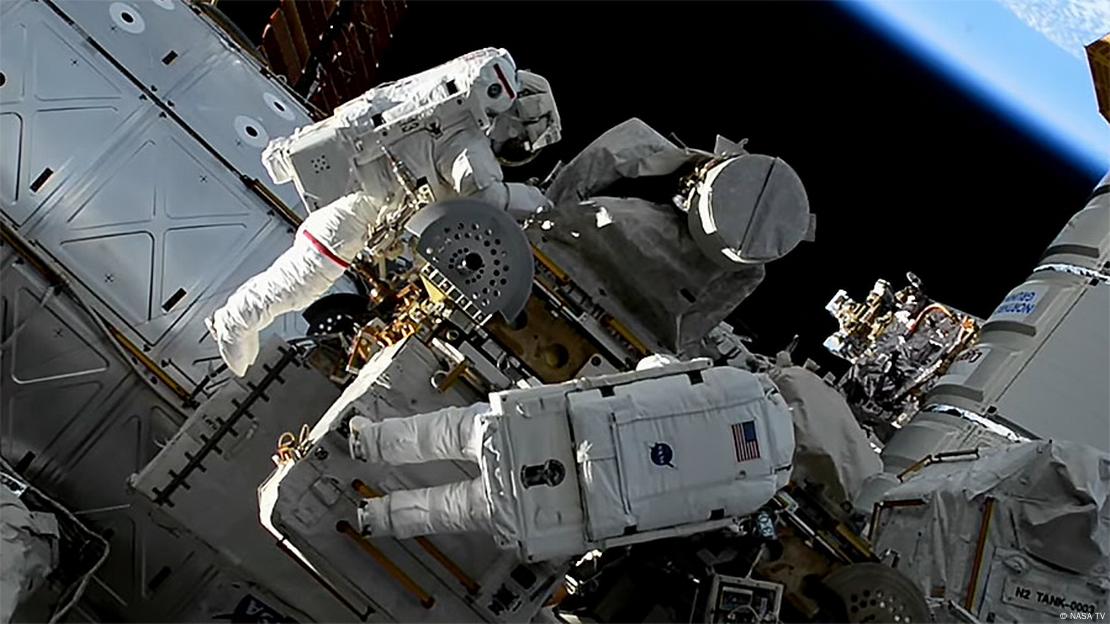International Space Station: 25 years of a safe space
It passes over our heads 16 times every 24 hours — traveling through 16 sunrises and sunsets — at an altitude of a mere 430 kilometers (267 miles). It’s possible to spot it from the ground and track where it is in the sky at any minute of the day.
But the International Space Station (ISS) and the science that astronauts do onboard often go unnoticed.
There have been numerous scientific discoveries on the ISS that have had a direct impact on our everyday lives on Earth (more on that below).
It is one of the world’s most successful locations for international diplomacy, peace and collaboration, even in times of war. It’s literally been a safe space for 25 years.
Here’s what you need to know, starting with the basics.
When did the International Space Station launch?
The first segment of the ISS — the Zarya Control Module — was Russian and launched on November 20, 1998.
Zarya supplied fuel storage, and battery power and was a docking zone for other space vehicles arriving at the ISS.
One month later, on December 4, 1998, the US launched the Unity Node 1 module. Together, the two modules were the start of a functioning space laboratory.
Over the course of 42 assembly flights, the ISS became what it is today.
Among the first “live-in” astronauts were NASA’s Bill Shepherd and Roscosmos cosmonauts Yuri Gidzenko and Sergei Krikalev. Since then, the ISS has been continuously inhabited.
How big is the ISS?
The ISS is split into various spaces for living and working. It has six sleeping quarters, two bathrooms, a gym, and a 360-degree view bay window.
It is 109 meters (356 feet) end-to-end, “one yard shy,” states NASA, of a full-length American football field including the end zones. Or, if swimming is your thing, the ISS is more than twice the length of an Olympic swimming pool. And if you’re into rockets, the ISS is shorter than SpaceX’s Starship by 12 meters.
Its solar array wingspan is also 109 m. To compare: The largest commercial aircraft, the Airbus A380, has a wingspan of 79.80 meters.
And about 13 kilometers of electrical wire run through the space station.
What is the ISS’s average speed?
As mentioned above, the ISS orbits Earth numerous times in one day — every 90 minutes to be precise — at a speed of 8 kilometers (5 miles) per second.
What do astronauts do onboard the ISS?
When they’re not conducting scientific experiments (ones that can’t be done on Earth), ISS astronauts go on regular spacewalks to add new components to the station, such as robotic arms, or run maintenance. There have been times when astronauts have had to inspect or fix holes that were created by space debris.
The astronauts are also on a strict health regimen. They have to mitigate the loss of muscle and bone mass, which is caused by microgravity in space. That includes working out on specially designed machines, including treadmills, for at least two hours a day.
But as researchers focus more and more on humans living in space, for example on the moon or Mars, the astronauts’ daily exercise is also used to improve our scientific understanding of the effects of space on our bodies — what would happen if humans lived in microgravity for years on end? Would our bodies still be strong enough, or too weak to return to Earth?

What scientific discoveries on the ISS have benefited life on Earth?
Astronauts have conducted hundreds of scientific experiments on the ISS. Sometimes they experiment on themselves, monitoring their general health, nutrition or the effects of solar radiation. And sometimes they conduct experiments for scientists on Earth. These experiments have led to numerous scientific breakthroughs.
From Alzheimer’s and Parkinson’s Disease to cancer, asthma and heart disease — it’s all been studied in space. Scientists say some medical experiments are best done in space because in microgravity cells behave more like they do inside the human body, but it’s difficult to create such conditions on Earth.
There have been discoveries to benefit drug development, new water purification systems, methods to mitigate muscle and bone atrophy and those that have led innovations in food production.
How long will the ISS be operational?
Plans for the future operation of the ISS were thrown into uncertainty with the start of the 2022 Russia-Ukraine war.
Both the European Space Agency and national bodies withdrew from international collaborations with Russia. And Russia said it was leaving the ISS to build its own space station.
It’s not just the war, though — old and new spacefaring nations want to make an independent mark on space. They include Japan, China, India, the UAE and others.
The US and Europe say they remain committed to the International Space Station through 2030. But plans are afoot for a post-ISS world, as well: NASA is almost entirely focused on its Artemis program and plans to populate the moon. And ESA is working towards a new space station, which it is calling Starlab.
Seldom does the phrase “watch this space” mean so much.



